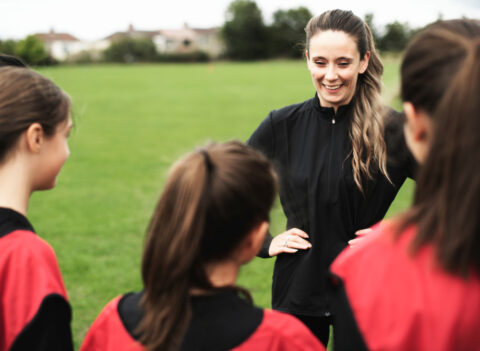Unlocking the Essentials of Sports Periodization: A Guide for Strength and Conditioning Coaches
In the realm of sports performance, one of the fundamental concepts that coaches and athletes must grasp is periodization. This structured approach to training, often attributed to pioneering sports scientist Tudor Bompa, is a cornerstone in optimizing athletic development and performance. In this guide, we’ll delve into the basics of sports periodization, exploring its principles, phases, and applications.
Understanding Periodization 
Periodization is a systematic method of organizing training into distinct phases or periods, each with specific goals and focuses. Its primary objective is to enhance an athlete’s performance by strategically manipulating training variables such as intensity, volume, and frequency over time. By periodizing training, coaches aim to achieve peak performance during key competitions while minimizing the risk of overtraining and injury.
The Phases of Periodization
- Preparatory Phase (Off-Season): Also known as the macrocycle, this phase lays the foundation for the entire training plan. Its primary goals are to develop overall strength, endurance, and technical skills while addressing weaknesses and imbalances. Workouts in this phase typically involve higher volume and lower intensity to build a solid base.
- Strength Phase (Pre-Season): As athletes transition closer to their competitive season, the focus shifts towards maximizing strength and power. Workouts during this phase emphasize heavy resistance training and explosive movements to enhance muscle mass, force production, and speed.
- Peaking Phase (In-Season): The peaking phase is where the training plan reaches its climax, aiming to optimize performance for specific competitions or events. Here, the emphasis is on maintaining strength and power while fine-tuning skills and tactics. Training volume decreases, while intensity peaks to ensure athletes are at their peak condition when it matters most.
- Transition Phase (Post-Season): Following the conclusion of the competitive season, athletes enter the transition phase, also known as the active recovery phase. The focus shifts towards rest, regeneration, and addressing any lingering injuries or fatigue. Workouts in this phase are lighter and less structured, allowing athletes to recharge both physically and mentally.
Applying Periodization 
When implementing periodization, strength and conditioning coaches must tailor the training plan to suit the specific needs and goals of individual athletes or teams. This requires a thorough understanding of factors such as sport demands, athlete characteristics, and competition schedules. By customizing the periodization model, coaches can optimize performance outcomes while minimizing the risk of burnout or injury.
Benefits of Periodization
- Optimized Performance: By strategically manipulating training variables, periodization allows athletes to peak at the right time, maximizing their performance potential during key competitions.
- Injury Prevention: Periodization helps manage training loads effectively, reducing the risk of overtraining and injury by allowing adequate rest and recovery between intense training phases.
- Long-Term Development: By systematically progressing through different training phases, athletes can achieve continuous improvements in strength, power, and skill development over time, leading to long-term success.
Conclusion
In the dynamic world of sports performance, periodization stands as a guiding principle for strength and conditioning coaches seeking to unlock the full potential of their athletes. By strategically organizing training into distinct phases, periodization optimizes performance, minimizes injury risk, and fosters long-term development. Understanding and applying the principles of periodization is essential for coaches aiming to excel in the competitive arena of sports conditioning.
Aspiring coaches looking to deepen their understanding of sports periodization and other essential concepts in strength and conditioning can benefit greatly from enrolling in a comprehensive strength and conditioning coach course. Such courses provide the knowledge, skills, and tools necessary to design effective training programs tailored to the unique needs of athletes across various sports disciplines. Invest in your coaching journey today and embark on the path to unlocking athletic excellence through the power of periodization.
Strength and Conditioning Coach Course – Learn more with us
Along side ski instructor courses, at Subzero Coaching we organise and run the IASI Alpine Strength & Conditioning Induction course. This a one week course dedicated to all interested in getting to know more about nutrition, fitness training, coaching methods, long term athletes development and much more. Open to all, from recreational skiers to ski instructors and coaches!




